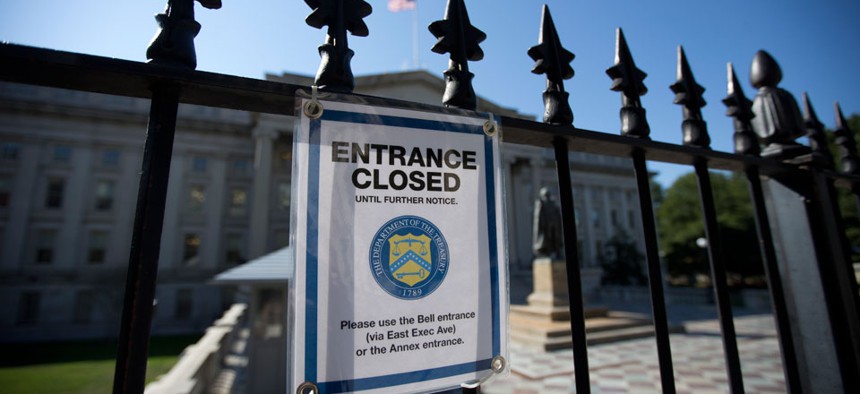OMB to Tabulate Shutdown Cost, Flesh Out Management Agenda
Interim controller tells CFO group of coming flexibility in reporting requirements.
The Office of Management and Budget is preparing its own estimate of the cost of the October government shutdown, the acting controller said on Wednesday, embracing a task that is also under consideration by the Government Accountability Office.
OMB will examine the 16-day closure’s effects on the overall economy and on “cost activity in areas affected, including personnel costs such as deferred wages,” Norman Dong told a gathering of the Association of Government Accountants convened to mark the group’s latest survey of agency chief financial officers. Dong also promised that the Obama administration’s second-term management agenda will be a “force multiplier on our work from recent years.” He said OMB has been meeting with agencies to focus “not on the what, but on the how” of translating the four themes of effectiveness, efficiency, economy and people into specifics and a process that can be “monitored and supported.”
When budgets are increasing, Dong said, as they were when he worked for the Federal Emergency Management Agency after Hurricane Katrina in 2005, “we don’t ask the hard questions, but when budgets are shrinking, we’re more thoughtful on how money is being spent.”
The new survey, executed with Grant Thornton LLP, portrays the chief financial officers group as leading a “declining, dispirited workforce” able to deliver increasingly less in government services. CFOs also face an ongoing tension between tight resources and expanded reporting requirements. The results prompted three agency financial officials to discuss their relationship with OMB, the move toward shared services, the all-agency transparency requirements proposed in the DATA Act (which on Wednesday cleared the Senate Homeland Security and Governmental Affairs Committee) and how agencies fared during the shutdown.
Jim Taylor, chief financial officer at the Labor Department, said, “Unfortunately, we were ready for this shutdown because we have been through five [near-shutdowns] in the last few years. One thing Labor had not anticipated was the freeze on Health and Human Services Department grants to states to distribute unemployment insurance, which “overwhelmed” many states, he said. The shutdown “pushed us to be creative in moving money in ways not anticipated,” he added, “and if it happens again, we’ll be more creative.”
Richard Gregg, fiscal assistant secretary at Treasury, said, “Treasury did well with a small CFO shop contingent, finding creative ways to communicate” to employees who were furloughed. Denied email, managers used the U.S. mail to send messages “that you’re important, and we’re working to get you back as soon as possible.” On the first day back, Secretary Jack Lew had a town hall, Gregg said. During the two weeks of agency closures right before the deadline for raising the debt ceiling, he added, his team managed smoothly in making trust fund payments, but “in the second week things were bouncing all over.”
OMB staff “did a terrific job” of handling the shutdown, Dong said, “though deciding who was going to be excepted was not always a bright line.” OMB officials had to work with agencies to manage such issues as travel card delinquencies among employees who could obtain no vouchers during the closures. “It was just as important to focus on the re-start,” he added, noting that a major challenge was the altered financial reporting calendar.
Both the Treasury and Labor financial officials said that while they are diligently complying with reporting requirements under the Government Performance and Results Modernization Act, the proposed DATA Act and OMB’s promotion of greater services sharing among agencies, CFOs must still set “agency-specific” priorities to get information out to stakeholders.
Gregg recommended setting eight to 10 priorities and then pushing them hard. “Having data is easy,” added Taylor. The challenge is “getting it to the step where it’s actionable.”
Dong said, “OMB recognizes that the more requirements placed on agencies, the more we end up competing against ourselves, and that not all priorities can be equal.” He said the White House is moving away from “one-size fits all” to make reporting tasks “a little more tailored and agency-specific,” an approach he called “less scattershot” and more like “fine-tuning.”




